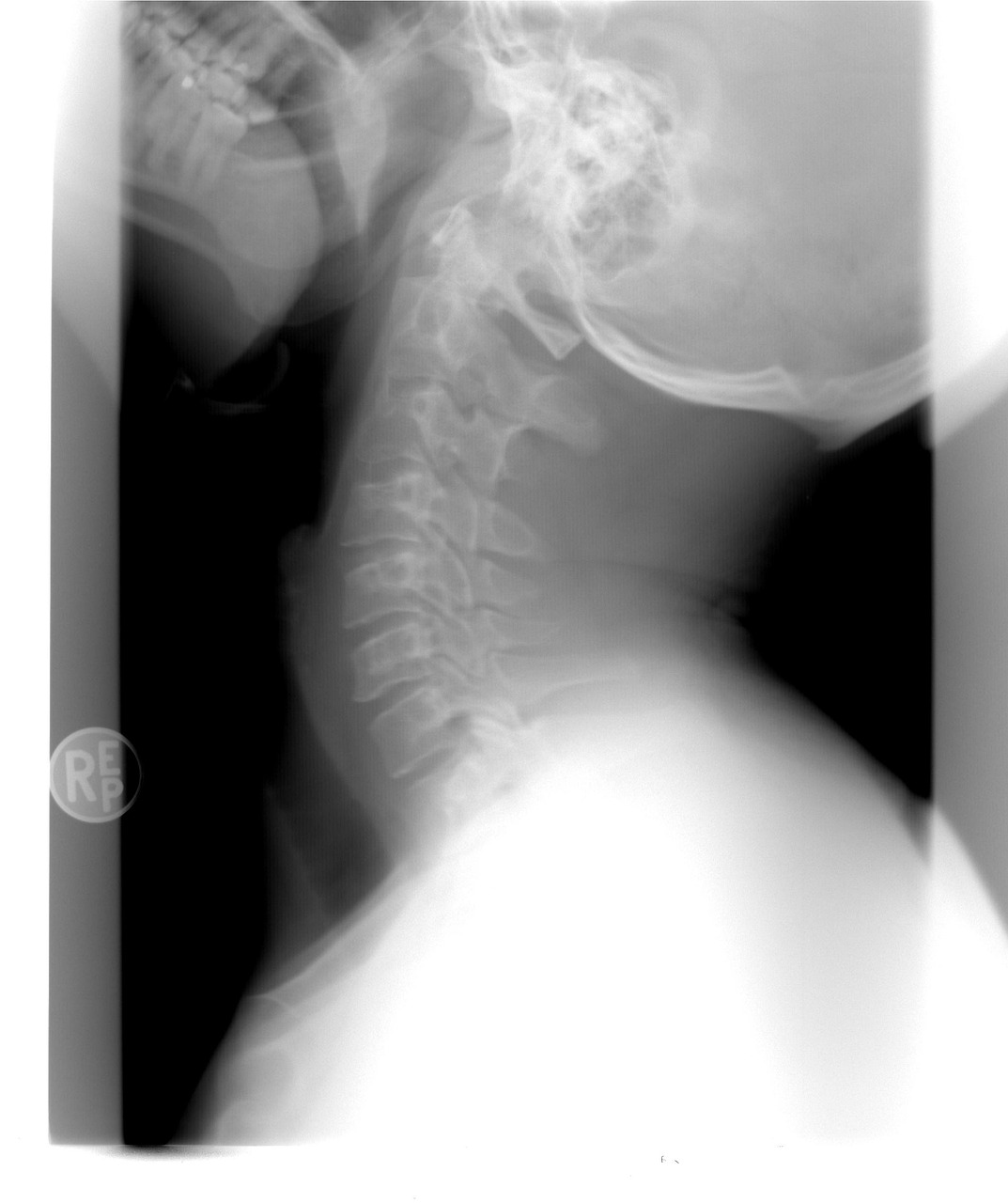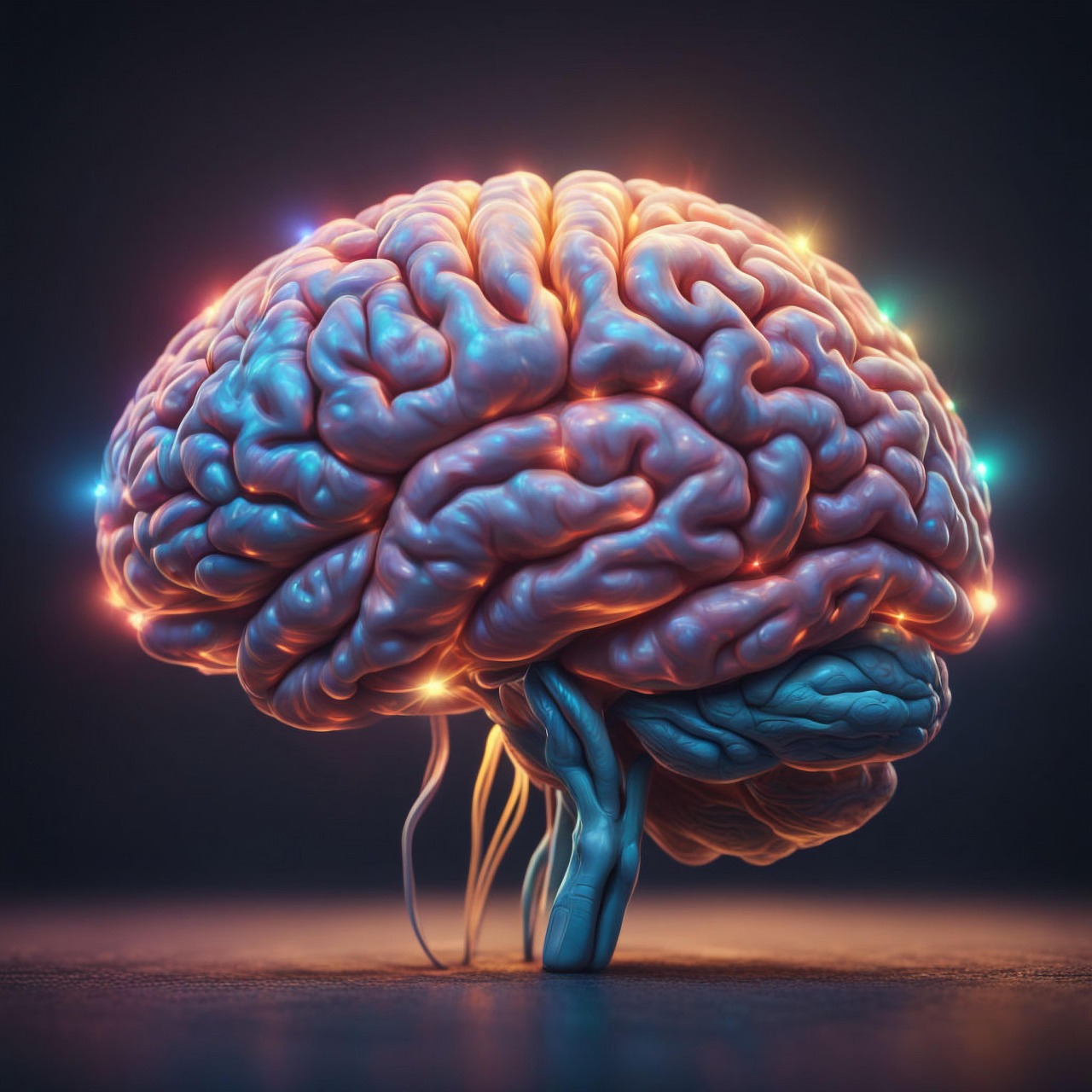Blog
Learn more about how chiropractic can help you!
Learn More
Wholesome Chiropractic is dedicated to providing exceptional care through our unwavering commitment to each patient. Our passion drives us to catalyze positive change in healthcare while delivering an outstanding healthcare experience. We are committed to creating a welcoming environment that supports you in achieving your health goals.
Can Chiropractic Help with Fibromyalgia?
Date: April 1st, 2025
Fibromyalgia:
Fibromyalgia is a chronic pain condition characterized by widespread pain throughout the body. It affects twice as many women than men and it affects about 2% of the population or 4 million adults in the United States. Fibromyalgia can also be flared up by illnesses, physical trauma or emotional stress.
According to the CDC, fibromyalgia symptoms can include:
-Musculoskeletal pain and stiffness, often through the entire body.
-Fatigue and tiredness.
-Depression and anxiety.
-Sleep issues.
-Memory, thinking or concentration issues.
-Tension headaches or migraines.
-Digestive issues (i.e. irritable bowel syndrome).
-Pain in the face or jaw.
-Tingling or numbness in the hands and feet.
What Causes Fibromyalgia?
The cause behind fibromyalgia is still uncertain, but the most researched theory behind fibromyalgia pain is that at some point in a person’s life, their nervous system changes in a way that this person experiences an increased sensitivity to pain. This can happen numerous ways, such as:
One can have increased levels of chemicals that signal pain, resulting in inaccurate pain signals. Pain receptors develop a memory where they overreact to both painful and non-painful stimuli.
How can Chiropractic Treatment Help?
The nervous system coordinates and regulates the function of every tissue, organ and system in your body. As we saw, in the case of fibromyalgia patients, there’s an issue in the functioning of the nervous system that affects how your brain processes pain signals.
Chiropractic treatments are all about optimizing the communication of your nervous system. The aim is to correct vertebral misalignments that put pressure on the nerves that relay information to and from the brain. By removing this nerve interference, chiropractic adjustments can improve the functioning of your nervous system which in turn can help support people suffering from fibromyalgia. By restoring structural integrity, chiropractic care can also help to alleviate pain, increase range of motion and increase sleep in people who suffer from this chronic condition.
On the other hand, practice members who come in with fibromyalgia tend to be different from those coming in with typical neck pain or low back pain in the sense that they sometimes require us to modify their adjustment. Because people with fibromyalgia tend to have a lower threshold for pain signals, they tend to do better with a more specific and gentle adjustment.
If you want to learn more about how to manage fibromyalgia pain through conservative and alternative means, reach out to your local chiropractor!

Can Chiropractic help with Sinus Problems?
Date: March 17th, 2025
Can Chiropractic help with Sinus Problems?
Cold and flu season, pollen blooming, rapidly changing temperatures, all of these can drive our sinuses haywire. These clogged nasal passages can lead to sinus pressure, sinus pain, sinus headaches, and even if it goes too far, sinus infections. Sometimes it feels like there is no solution but to wait it out or take decongestants. People can even have chronic sinus issues that do not ever clear up.
What is happening in our Sinuses?
Sinuses are the hollow spaces inside of your skull that help balance pressure and drain mucus from your nose. There are multiple sinuses, but the ones we think about when we talk about sinus pressure are the one behind your forehead called the frontal sinus, and the ones behind your cheekbones called the maxillary sinuses. These sinuses make a thin mucus through our mucus membranes that drains out of the channels at the back of the nose to help keep the nose free and clean of bacteria. They also serve to warm and humidify the air you breathe to keep your lungs healthy.
When fighting off a cold, allergies, or other causes of sinus pressure such as exposure to cigarette smoke, the tissue lining of the sinus cavities become inflamed and block the normal drainage of the mucus, increasing the pressure, clogging the passage, and sometimes even causing swelling in the face. This inflammation and build up is what contributes to chronic sinus problems. When this inflammation does not reduce over time but is constantly present, this can become chronic sinusitis. The immune system will attempt to help fight off a sinus infection, but the thick mucus will impede sinus drainage and continue to build up increased pressure and can even contribute to other side effects like a sore throat or a cough.
How do we treat sinus issues?
While many people will turn to nasal sprays, allergy medication, or common cold medicine, these interventions usually only address the mucus level itself, instead of dealing with the root cause of the inflammation.
Can Chiropractic Care help?
Yes it can! Chiropractic care helps work on relieving pressure on the spinal cord which in turn helps the nervous system communicate and control the immune system better. This relief of pressure will help your body better regulate its immune response which can in turn help with sinus infections. On a physical level as well, chiropractic adjustments of the neck or even of the facial bones themselves can help restore balanced pressure and proper drainage in the head and frontal sinuses providing relief of pain.
Call today and see how Chiropractic care can help you get through the spring season successfully!

Can Chiropractic help with Spinal Stenosis
Date: March 13th, 2025
What is Spinal Stenosis?
Spinal stenosis is defined as a narrowing of the spinal canal. The spinal canal, also known as the spinal column, is the protective sheath around the spinal cord. The spinal cord is the bundle of nerves that comes out of the base of the brain stem and runs down the center of the entire spine with nerves that branch off of it all the way down and send signals from the brain to the entire rest of the body. The spinal cord itself is inside the protective canal, floating in cerebral spinal fluid which provides insulation and protection. When that canal has abnormal pressure placed on it, it can impact the ability of the nervous system to communicate through the spinal cord by squeezing the nerves, hindering signaling, or by applying stretching tension on the spinal cord, which can also impact the communication of the nervous system, and even cause damage.
Symptoms of Spinal Stenosis
This squeezing pressure on the spinal cord and the nerve roots within the spine can occur in the neck and lower back, and depending on the area, different symptoms can arise, although some people with spinal stenosis have no noticeable symptoms. Symptoms can occur, and these can include pain, numbness, and muscle weakness. In the cervical spine symptoms can include neck pain, numbness, tingling or weakness in the arms or hands. With lumbar spinal stenosis sometimes low back pain can be felt, but pain can also occur in one or both legs. Sometimes people will feel weakness or numbness in their leg or foot as well which can lead to problems with walking and balance. More severe symptoms of lumbar stenosis can also include feeling problems with the bowel or bladder. This can often be worsened after standing for a long period of time, or after walking. Often, in the lower extremities, people will find that the symptoms improve when bending forward or sitting.
What Causes Spinal Stenosis?
There are many possible causes of spinal stenosis. With age and wear and tear on the body, sometimes people can develop degenerative disc disease which can cause arthritic changes in the spine. Arthritic changes will usually present as extra bone growth on the spine, known as bone spurs. These do not necessarily grow out of the spine, but can grow into the spine and push into the spinal canal and develop spinal stenosis.
A herniated disc can also cause spinal stenosis. The supportive spinal discs in between the spinal vertebra, called intervertebral discs, are basically a doughnut of cartilage surrounding a jelly center called the nucleus pulposus. Those discs provide shock absorption for the spine. If that disc is damaged from spinal injuries, particularly compression, that jelly center can squish out and push into the spinal canal, and spinal stenosis occurs.
But one of the most common causes of spinal stenosis is injury. Car accidents and other traumas such as a fall or blow to the spine can cause spinal bones to break, or can cause swelling of the tissues surrounding the spine causing narrowing and putting pressure on the spinal cord and nerve roots.
What can help treat spinal stenosis patients?
Often, spinal stenosis patients will be seeking pain relief, so common treatment for spinal stenosis will involve some form of medication to help relieve pain. Sometimes steroid shots can help reduce the inflammation around the affected nerve roots. However, this does not treat the cause of the pain. Some providers will prescribe physical therapy to help build up endurance and strength and help improve flexibility in the spine. In severe cases, some providers may even recommend spinal surgery to help create more space within the spinal canal.
But one of the most effective, and least invasive treatment for spinal stenosis is chiropractic care.
How does Chiropractic treatment help spinal stenosis?
Chiropractic treatment for spinal stenosis, instead of focusing on the pain caused by the stenosis, focuses on relieving the pressure placed on the nerve roots by bettering the alignment of the spine. Chiropractic adjustments help relieve pressure on the spinal nerves by restoring proper alignment of the spine and not letting it sit in poor posture. Chiropractors can utilize multiple techniques to work on relieving pressure on the spine, including flexion distraction manipulation, torque release technique, and others. Furthermore, this adjustment often also helps improve flexibility and range of motion in the spine, relieving pain, which often helps the patient feel more enabled in their life to be active and mobile without fear of pain or further injury.
Call today and see how Chiropractic treatment can help you!

Does Everyone Get Chiropractic Adjustments the Same Way?
Date: March 9th, 2025

Does Everyone Get Chiropractic Adjustments the Same Way?
As you might expect, many people don't get adjusted the same way (the same adjustment, with the same technique and the same treatment plan) because there are many factors that determine what an adjustment looks like for someone. Let's dig deeper into why this can be!
Chiropractic Technique:
In the chiropractic world, there are many different techniques that allow a chiropractor to analyze someone's spine as well as to execute an adjustment. Depending on the technique that your chiropractor uses, your adjustment could include:
-Manual adjustments
-Drop tables
-Instruments
-Distraction tables
-Sacro-Occipital Technique blocks
-Soft tissue therapy
-Others
Age/Stage of Life
Expectedly, how you get chiropractic care as a baby is not the same way that you get care as a child or an adult. Babies are not tiny adults, which is why their adjustments looks different! When it comes to babies, their adjustments are much gentler and there is a more neurologically-based approach instead of a musculoskeletal one. Additionally, a young adult with a simple case of neck pain may be adjusted very differently than someone past their seventies who has a tougher time getting on the table, shifting positions or whose body is more sensitive to certain types of adjustments.
Past and Present Conditions
On the other hand, there are some people with either past or present medical conditions or issues that could change how a chiropractor approaches their body. For example, you may have a history of hardware in your body, such as spinal fusion surgery. This could mean that your chiropractor cannot directly adjust over the affected region and may have to focus on stabilizing the segments above and below it. People with disc herniations or disc extrusions may benefit greatly from chiropractic, but they will do better with adjustments that do not input excessive rotation into those segments. Patients with a history of cancer treatments may have osteopenia, which also means that they may benefit more from gentler chiropractic techniques when working on their midback. Abdominal aortic aneurysms, neuropathy, pregnant mommas, and people with a spondylolisthesis are more examples of people who typically require some modification to how one delivers their adjustment.
Congenital Anomalies
You might be surprised to hear that many people out in the world have congenital anomalies and many don't even know about it! Congenital anomalies are structural anomalies that occur during fetal development. From a chiropractic perspective, we may see that someone has eleven -instead of twelve- pairs of ribs, they might have an extra bone in their low back, or they may have a fusion between two or more segments in their neck. There are many other types of congenital anomalies that we see in the office and most of them are benign and don't change the way you experience life or get adjusted. However, there are some that may affect how we get chiropractic patients adjusted, such as having a posterior ponticle, a cervical rib, or Eagle's syndrome. These congenital anomalies can only be seen through imaging, which is why many chiropractors feel strongly about taking xrays of their new practice members.
Personal Preference:
One last reason why you may see that someone's chiropractic adjustment looks very different than someone else's is personal preference. Some chiropractic patients have years of experience with care, they've tried multiple techniques, and they already know how their body better responds to a spinal adjustment.
Can Chiropractic Help with Insomnia?
Date: March 2nd, 2025

Anyone who has had a rough night of sleep knows that sleep can play a significant role in how you feel on a given day. But for those who deal with insomnia, getting a good night's sleep can feel like an impossibility. But what is it about sleep that affects our body's ability to function so much?
Why is Sleep so Important?
Sleep is vital to maintaining good health. It is essential to every process in the body and allows your body to function physically and mentally as it should. Sleep helps your immune system, digestive system, metabolism, mental health, mood, and so much more. In children sleep is even more critical in that it helps them develop mentally and physically. Poor sleep in children has been associated with difficult behavioral issues, difficulty learning and retaining information, and even poor eating patterns.
While your body sleeps, your brain gets a chance to process and perform healthy brain functions like storing new information in long-term memory, clearing the cortisol that has built up from the day's activities, and recharging mentally so that you can think clearly tomorrow and maintain good mental health. Physically our bodies get a chance to rest and recover from a day of activity so that we are ready to work, exercise, and play the next day.
Sleep helps our brain function properly, it helps our emotional and mental state stay healthy, it reduces our risk of disease, and so much more. And poor sleep and sleep deprivation have been associated with a whole host of issues such as fatigue, higher levels of stress, anxiety, depression, lower immune system, weight gain, and behavioral issues, and sleep deprivation can even increase your risk of having a car accident.
What is Insomnia?
Insomnia is defined as a sleep disorder where it is difficult to fall asleep, stay asleep, or get back to sleep. This can then make you feel groggy and sap your energy level, as well as lead to poor health, work performance, and quality of life. This lack of quality sleep at night can also then cause daytime fatigue. Those with trouble falling asleep often will find their body's ability to function the next day is decreased, and their low energy levels can lead to other health issues. Insomniacs may try to get more sleep, but if their body still does not get a chance to have true restorative sleep, their issue will remain the same.
Chronic insomnia can also lead to a weakened immune system, as the poor quality of sleep means that the body never gets a chance to recover.
Common causes of insomnia can be stress, eating too late in the evening, drinking too much caffeine, a poor work schedule, and poor sleep habits, but can also be associated with medical conditions or the use of certain drugs. Mental health can also contribute to insomnia, anxiety, PTSD, and Depression can also have a side effect of insomnia.
Other Sleep Disorders
Sleep apnea can also be a cause of insomnia. Sleep apnea is a condition where during sleep the body repeatedly stops breathing. This back-and-forth of loss of oxygen and rapid restart of breathing can mean that the body never enters true restful sleep, and as such, even a person who got an adequate number of hours of sleep can still feel incredibly tired and fatigued the next morning.
How Does Pain Contribute to Poor Sleep?
Another cause of poor sleep can be bodily pain. When the body is in pain, it can lead to difficulty falling asleep; chronic pain can make it impossible. Poor alignment in the spine can lead to issues with neck pain or back pain which can lead to difficulty feeling comfortable and finding a good sleeping position. Long-term poor posture can also contribute to tension and discomfort in the muscles throughout the whole musculoskeletal system.
How does the nervous system contribute to sleep?
Another possible cause of poor sleep is nervous system dysregulation. There are two sides to the nervous system, the sympathetic and parasympathetic nervous systems. The sympathetic nervous system controls the fight or flight response of the body, helping the body protect itself and be able to get away from danger. Sympathetic activation will cause the body to increase the heart rate, decrease the motility of the digestive tract, constrict blood vessels, raise blood pressure, and prepare the body to be on high alert. The parasympathetic nervous system is the opposing side. If Sympathetic is "fight or flight", parasympathetic is "rest and digest". It relaxes your body and increases your ability to digest food, it reduces the amount of work your lungs do during times of rest, and lowers your heart rate. The parasympathetic side of the nervous system is important for helping reduce overall tension in the body and helping attain good sleep.
However, sometimes people can get trapped in fight or flight, and this increased sympathetic activation can lead to insomnia as the body is never truly able to rest.
How can Chiropractic care help overcome sleep disorders?
This is where a chiropractor can help. People can try to relieve stress and pain in the body in many ways, but one of the most effective methods of finding the root cause of pain is chiropractic care. Spinal misalignments can be one of the primary root causes of pain in the body, and chiropractic manipulation helps to correct misalignments that are holding the body in pain. Often patients will report that even after one adjustment they experienced better sleep.
Chiropractic adjustments can also help activate the parasympathetic side of the nervous system and help balance communication through the body, allowing the body to switch through the sides of the nervous system as it needs to as opposed to being stuck in one or the other. This better communication can help increase your sleep quality and better your sleep patterns, helping you fall asleep and stay asleep better.
How else can chiropractic treatment help me?
There are so many other ways that chiropractic care can help the functioning of the whole body. Explore our other blog posts to see other examples, and call today to schedule your chiropractic evaluation and see what chiropractic medicine can do to make your life better!
What's Making Us Unhealthy and How Can Chiropractic Help?
Date: February 23rd, 2025

In the world we live in, there are as many emerging things to do to be healthy as there are things to avoid doing so as to not become unhealthy. It can be pretty overwhelming, but we believe that understanding the big-picture elements affecting our health is a great place to start before we start talking about how your health is related to chiropractic. So let's get into it!
There are 3 Types of Stress Bombarding us Chronically:
-Physical stress:
This type of stress can encompass a wide scope of physical elements, big and small. On one side, we've got macro-traumas that can have an immediate impact on our body, such as:
-Motor vehicle collisions
-Slips and falls.
-Injuries.
On the other hand, we have microtraumas that have a subtle, yet effective effect on our body over time, such as:
-Our posture.
-Sitting for long hours in one position.
-Having a physical job.
-Repetitive movements in sports (i.e. swinging a golf club, kicking a soccer ball, swinging a baseball bat) or life.
-Gravity.
-Chemical stress:
This type of stress involves the toxic substances that our body is exposed to that then affects our levels of inflammation, our body's ability to detoxify, and our cellular health.
Examples of chemical stress that we experience include:
-The quality of our diet.
-The quality of the water that we drink, shower in, and use to wash our clothes.
-Air quality in our homes and urban areas.
-Products such as laundry detergent, deodorant, makeup, candles, soaps, toothpaste, and pesticides.
-Mental/Emotional stress:
This type of stress typically needs no introduction. We all have many different mental and emotional stressors bombarding us day in and day out. Unfortunately, this is also the type of stress that we push down or try to push through.
Here are some examples of mental/emotional stress:
-Work-related stress.
-Being a parent, managing multiple schedules.
-Managing debt.
-Declining social relationships.
-Planning a holiday vacation.
What does having chronic stress mean for me and my body?
What these 3 types of stresses all have in common is that they add physiological stress to our body. Physiological stress relates to any factors that challenge the homeostasis of a cell or organism. You see, our body is always working very hard to keep us running and in good health.
When we have long-term stress, whether physical, chemical, mental, or all three, our body is going to start dysregulating itself. Mayo Clinic states that symptoms of chronic stress can include:
-Anxiety.
-Depression.
-Digestive problems.
-Headaches.
-Muscle tension and pain (i.e. neck pain, back pain).
-Heart disease, heart attack, high blood pressure and stroke.
-Sleep problems.
-Weight gain.
-Problems with memory and focus.
How is My Health Related to Chiropractic Care?
The first thing to keep in mind is that when it comes to your health:
-It. Takes. A. Village.
-It takes consistent effort on many fronts (i.e. exercising, physical therapy, nutritional therapy, setting boundaries, managing external factors) to get healthy and keep yourself healthy.
-There is no one single thing that will do it.
On the other hand, while chiropractic adjustments alone aren't enough to solve all of your issues, by getting pressure off nerves, chiropractic can support your body's ability to cope with physiological stress. The nervous system is also the master control of your body, which means that when it is functioning optimally all your other organs and tissues can have improved coordination and function as well. An example of how the nervous system can affect other parts of your body is neuropathy: when there's damage to peripheral nerves people will typically loose sensation in their feet, but this problem is due to nerve damage, not due to a problem in the skin or muscle of your feet!
A third way in which chiropractic treatment helps is by stabilizing the foundation of your body, which is your pelvis and vertebral column. Structural misalignments here can put pressure on nerves and affect our body's function, it can mean that our joints can tear and wear quicker, and it can also make us more prone to injuries. One of the most important things to keep in mind is that we're not talking about a single chiropractic adjustment, our body needs consistent checks and care to counteract the stress that bombards us day-in and day-out. For many patients this can mean weekly care and for many others it can mean less frequent care.
Through chiropractic services, you can strengthen your body from the inside-out so that you're in a better position to adapt to the different types of stresses that life likes to throw your way. The magnitude of what we do goes way beyond back and neck pain because the nervous system is in charge of much more than that! If you're interested in learning more about your nervous system's health and spinal manipulation, reach out to your local chiropractor or seek out people from your community who are chiropractic patients!

Why Should We All Assess the Health of our Nervous System?
February 18th, 2025
How much do you know about the nervous system? You probably know that it includes our nerves, brain and spinal cord, and you also probably know that pinched nerves are not fun. Other than that, most people aren’t aware of the function of the nervous system and the huge role that it plays in our body and health!
The Nervous System in a Nutshell:
The nervous system consists of the brain in our skull, the spinal cord that is housed in our vertebral column, and the complex branching of nerves that go to all the tissues and organs in our body: from the skin in our scalp to the tips of our toes! And truth be told the nervous system is way more complex because it can be further divided into the central nervous system, peripheral nervous system, the somatic nervous system, the autonomic nervous system, cranial nerves, and much more, but this is all beyond the scope of today's goal!
The nervous system’s job is to work as a messenger in your body through electrical impulses. Through these messages, the nervous system allows you to have voluntary control of your body. For example, it allows you to move your body however you want, to sing, to dance, to do sports. It also allows you to control your breathing, for example it allows you to take a deep breath in, a deep breath out, and to hold your breath if you so desire it. The thing is that the nervous system also does so much more than this!
Also, the nervous system controls all of the things that we do involuntarily. It keeps us breathing when we’re asleep, it coordinates metabolic processes such as our digestion and blood pressure. Did you know the nervous system is also what picks up that your bladder is stretched and full and it sends signals to your brain so that you experience urgency or the need “to go”?
Your nervous system also converts the light that goes into your eyes into electrical signals which allow your to see. Similarly, the nervous system allows you to taste, smell and hear too! And there is so much more because your nervous system is also what sets the foundation for your personality, your memories, your ability to think and to make decision, this and so much more is only possible because of your nervous system!
Back to the question at hand…
Why Should We All Asses the Health of Our Nervous System?
Because the nervous system has a hand in everything that we do, who we are, and our health, it’s crucial that we support it. The nervous system is the master control of our body and if this system is affected, chances are that the rest of the systems in our body will be affected down the road too.
And because our nervous system is made of parts, this means that it is eventually made to break down. However, there’s still so much that we can do to keep the vital parts of our body as healthy as possible to push back the effects of degeneration as much as we can.
How we take care of our body has a huge impact in the health of our nervous system. Bad dietary habits, insufficient exercise, physical trauma, chemical trauma, mental trauma, the things we’re exposed to, even our thoughts and perceptions can have a huge impact in our nervous system’s health. The thing is, most of us have no idea what the health of our nervous system is.
How do you assess the health of the nervous system in a chiropractic setting?
In our chiropractic office, we assess the health of each of our practice member’s nervous systems during their first day with us and we re-evaluate how this health has changed at special appointments down the road.
During the first day we:
-Sit down with the practice member and take their history to get a better idea of their medical history and any physical, mental, or chemical factors that could be playing a role in their health.
-Perform a chiropractic evaluation to get a better understanding of the problem areas: where bones are misaligned, where muscle tone is affected, and where you may have postural issues.
-Take x-rays of the vertebral column to evaluate the quality of these bones, the alignment of the structure that protects the spinal cord and branching nerves, and if there are any red flags present such as fractures or instabilities that would change how adjust you or how we approach your body.
Once this whole day 1 process is complete, all four of the doctors sit down together and discuss each case and then we schedule a second appointment to go over the findings regarding the health of your nervous system.
What can it mean if my nervous system isn't healthy?
Because we've seen that the nervous system has a hand in all of our body processes, when it is unable to function optimally or has damage to it, many different symptoms can arise. These symptoms can range from pain and numbness or tingling to nervous system disorders such as Parkinson's and Multiple Sclerosis. With chiropractic, although we don't treat specific conditions, our aim is to remove nerve interference from misaligned vertebrae in your spine so that your nervous system can function better, heal, and be better able to adapt to the physiological stress of physical, chemical and mental stressors. In our office, we use a chiropractic technique that is neurologically based and allows us to have a better focus on the health of the nervous system.

Chiropractic and Ehlers-Danlos Syndrome
Date: February 13th, 2025
What is Ehlers Danlos Syndrome?
Ehlers-Danlos Syndromes (EDS) are a group of rare inherited connective tissue disorders.
The most common symptoms include:
-Joint hypermobility.
-Stretchy skin.
-Fragile skin that breaks or bruises easily.
EDS can affect people in different ways. For some, the condition is relatively mild, while for others their symptoms can be disabling.
Can I be adjusted safely if I have EDS?
This tends to be the most important question for new practice members who are coming in with a diagnosis of EDS. When it comes to getting adjusted with EDS, it is safe to receive chiropractic care, but you'll want to let your chiropractor know of your diagnosis in case they want to modify the way they adjust you based on your diagnosis and symptoms.
What type of chiropractic technique should I try?
In our experience, if your EDS symptoms are moderate to severe, you will want to receive chiropractic care that involves a technique that uses less force. For example, you may want to avoid manual adjustments and instead try instrument-assisted adjustments. In our office we use a chiropractic technique (Torque Release Technique) which uses a gentle, specific, and effective tool to deliver adjustments.
What are the benefits of receiving chiropractic care while having EDS?
As mentioned, one of the most common symptoms for people with EDS is hypermobility of the joints. This not only means that a person with EDS has a higher likelihood of dislocating joints, it also means that the effects of everyday life can take a bigger toll on an EDS patient's spine alignment (i.e. bad posture, car accidents, repetitive motions, sedentary lifestyles, falls, injuries). Because their body is more susceptible to these misalignments, people with EDS tend to suffer from headaches, neck pain, back pain, shoulder pain, joint pain and others. With chiropractic treatment, your chiropractor will work to correct the structure of your spine and to relieve pressure on the surrounding nerves.
Doing so can lead to:
-Decreased pain.
-Decreased inflammation.
-Decreased anti inflammatory medication usage.
-Better movement and quality of life.
-Better nerve communication going from the brain out to your body.
Can I combine chiropractic care with other therapies?
Absolutely! EDS patients who are benefiting from chiropractic management can complement their care with other therapies, such as physical therapy and massage. Postural corrective exercises, releasing through tight muscles, and strengthening the foundation of your body can go a long way with EDS symptoms.
There are two important things to consider when it comes to this.
Firstly, make sure that whichever therapy you decide to try, your physician knows about your diagnosis and they have an individual approach to your care. Secondly, keep an eye out to see if you get excessively sore or experience exacerbations if you do multiple therapies in one day. If that's the case, consider spreading them out throughout the week to give your body enough time to adjust to each therapy.
Do you have any other questions when it comes to Ehlers Danlos Syndrome and chiropractic? Reach out to your local chiropractor!

Can I Get Chiropractic Care After Surgery?
Date: February 9th, 2025
With the amount of people that we see day-in and day-out, numerous times per year we have practice members who are scheduled for surgery and they voice concerns about their ability to get adjusted during their recovery period. Because post-surgical recovery can last weeks, practice members worry that they won’t be able to receive chiropractic treatment and that their health and past symptoms will resurface during this time.
The good news? Most often than not, we have accommodations available to our practice members that allow them to modify their chiropractic adjustment to fit their post-surgical needs. This helps them keep and continue the progress they’ve made under care so far, while still helping them recover quicker from the aches and pains associated with their surgery.
Our considerations with post-operative practice members:
The first things that we consider when it comes to someone who recently had surgery are:
-Where did the person have surgery?
-How recent was the surgery and how healed are the tissues?
-How is the person’s mobility?
Depending on the answer to these questions, we will determine:
-If the person can be adjusted at this time or if they need to wait for tissues to heal more.
-If the person needs to be adjusted seated in a chair for a few visits before going back to adjustments laying on a chiropractic table.
-If the person needs a few visits where they have a gentler approach to their adjustment.
Examples of people who receive chiropractic care post-surgery:
-C-section moms:
Often we treat women during pregnancy and postpartum. Some of our postpartum moms desire or require cesarean surgery during the delivery process and once they have their baby, we typically get to see them within a week. If they had a c-section, most moms feel comfortable laying face down on the table, but they require that we use gentle instrument-assisted adjustments when adjusting their pelvis while the tissues heal (approximately 6 weeks or when they get the ok from their doctor). Once the tissues heal, we typically go back to using chiropractic drop tables when adjusting their pelvis.
-People after surgical knee, hip, shoulder, breast, or dental procedures:
We also have numerous practice members who require the above-mentioned surgeries (as well as others). Some of these practice members require getting adjusted seated for a season before transitioning back to the chiropractic table. Other practice members, depending on where they had surgery and how invasive the procedure was, are able to lay face down, but require a gentler chiropractic approach. Reach out to your chiropractor and let them know about your surgery so that together you can determine an adjustment method that is safe and that you feel comfortable with.
-Spinal fusion or other hardware surgeries:
This is another case that we often see with practice members, but instead of recently having spinal fusion surgery, they had it done years ago and they are letting us know that they have hardware in their spine (or elsewhere in their body). Because our technique involves no rotation or aggressive thrusts into the body, the only modification that we usually need to take with someone who has hardware in their spine is that we do not adjust directly over these segments. Instead, we adjust the compensating segments above and below these areas.
The most important thing:
If you had surgery or if you have a surgical procedure coming up, inform your chiropractor about the procedure. They will take the time to explain what this would mean for your adjustments and they will determine a safe way to get you adjusted.

Benefits of Visiting a Chiropractor After a Car Accident: Expert Insights
Date: February 6th, 2025
Benefits of Visiting a Chiropractor After a Car Accident: Expert Insights
Visiting a chiropractor after a car accident can provide numerous benefits for both your physical and mental health. At our chiropractic clinic, we understand that car accidents can be a traumatic experience, and we are here to help you recover. Our team of experienced chiropractors can help alleviate pain and discomfort caused by car accident injuries, as well as provide guidance on how to prevent future injuries. One of the main benefits of visiting a chiropractor after a car accident is pain relief. Car accidents can cause a wide range of injuries, including whiplash, back pain, and neck pain. Chiropractic care can help alleviate these symptoms by realigning the spine and reducing inflammation. Our chiropractors use a variety of techniques, including spinal adjustments, and stretching exercises, to help you recover from your injuries as quickly as possible.
What is Whiplash?
Whiplash is a common injury that can occur during a car accident. It happens when the neck and head are suddenly jerked back and forth, causing damage to the soft tissues in the neck. Symptoms of whiplash can include neck pain, stiffness, and headaches. In some cases, the pain can spread to the shoulders, arms, and back. Whiplash can also cause dizziness, fatigue, and difficulty sleeping. It's important to seek medical attention if you suspect you have whiplash. A chiropractor can perform a thorough examination to determine the extent of your injury and develop a treatment plan to help you recover. Chiropractic care for whiplash typically includes spinal adjustments, massage therapy, and exercises to improve range of motion and strengthen the muscles in the neck and back. In some cases, chiropractors may also use other techniques such as ultrasound or electrical stimulation to help reduce pain and inflammation. At our clinic, we have helped many patients recover from whiplash injuries. We understand the importance of prompt and effective treatment to prevent long-term complications and improve overall quality of life.
Chiropractic Naturally Relieves Whiplash Symptoms
When it comes to car accidents, whiplash is one of the most common injuries. Whiplash occurs when the head is suddenly jerked forward or backward, causing strain and damage to the neck muscles and ligaments. Symptoms of whiplash can include neck pain, stiffness, headaches, and even dizziness. While there are many treatments available for whiplash, chiropractic care has been shown to be particularly effective. Chiropractors use a variety of techniques to help relieve whiplash symptoms, including:
Spinal adjustments: By manipulating the spine, chiropractors can help realign the neck and reduce pressure on the affected muscles and ligaments. Stretching exercises: Chiropractors can teach patients specific stretches and exercises to help improve range of motion and reduce pain.
At our chiropractic clinic, we have helped many patients recover from whiplash injuries. Our approach is always personalized and tailored to each individual's needs. We take the time to listen to our patients and develop a treatment plan that is right for them. If you have been in a car accident and are experiencing whiplash symptoms, we encourage you to consider chiropractic care as a natural and effective treatment option. With our help, you can get back to feeling like yourself again in no time.
Chiropractic Can Relieve Pain after Car Crash
After a car accident, it's common to experience pain and discomfort in various parts of the body. While painkillers and other medications can provide temporary relief, they don't address the underlying issue. This is where chiropractic care comes in. At our chiropractic clinic, we have years of experience helping patients recover from car accidents. We understand the unique challenges that come with this type of injury, and we're here to help. Chiropractic care focuses on restoring proper alignment and function to the spine and other joints in the body. By doing so, we can relieve pressure on nerves and muscles that may be causing pain and discomfort. During your initial consultation, we'll conduct a thorough examination to assess your condition and develop a personalized treatment plan. This may include spinal adjustments, massage therapy, and other techniques to help reduce pain and promote healing. One of the benefits of chiropractic care is that it's a non-invasive, drug-free approach to pain relief. This means that you can avoid the potential risks and side effects associated with medications and surgeries. If you've been in a car accident and are experiencing pain or discomfort, don't wait to seek treatment. Contact us today to schedule an appointment and start your journey towards recovery.

Prenatal Chiropractic Care in Meridian, ID- Your Complete Guide - 2025
Date: February 2nd, 2025
The vast majority of pregnant women experience some pain in the pelvic and lower back regions during their pregnancy. According to one study, approximately half of all pregnant women develop back pain before giving birth to their babies. Unfortunately, a group of these patients develops debilitating pain that forces them to stay at home or get admitted to the hospital. You might be thinking: “Can’t they just take some painkillers? ”Well, it is not that simple. You see, pregnancy and pharmacological drugs do not mix. This makes chiropractic care a very attractive choice to relieve pains and discomforts while providing other health benefits. In this post, we will cover everything you need to know about the benefits of chiropractic care in helping pregnant women. We will also touch on an interesting technique that helps with the breech position known as Webster’s technique.
The benefits of chiropractic care during pregnancy
Pregnancy is a continuous process of hormonal fluctuations and physical changes that place a toll on your posture and cause pain.
Additionally, the size of your baby is constantly increasing, which gradually shifts your center of gravity. This will have some negative consequences on your muscles and pelvis.
To relieve these aches, our experts will use various techniques that take into consideration your anatomy and initial complaints.
Doing this will alleviate the need to take any medications that could potentially place your baby in jeopardy.
According to one large study, scientists found that ¾ of pregnant women who try chiropractic care experience significant pain relief.
Furthermore, working on adjusting your center of gravity will help you feel energized and at ease during the rest of your journey.
After getting familiar with the generalities, let us dig deeper into the benefits of seeking the help of a Pregnancy Chiropractor in Garden City, ID:
1. Pregnancy Chiropractic Care Relieves Pain
Your prenatal chiropractor in Garden City will ensure that your spine is aligned, then work on your muscles, joints, and ligaments to increase their stability. After a few sessions, you will notice a drastic change in your symptoms, as well as the ability to perform day-to-day activities. Besides relieving your pain, chiropractic care will also lower the risk of any musculoskeletal injuries, which is super important for pregnant women.
2. Prenatal Chiropractic Care Reduces Nausea
One of the cardinal signs of being pregnant is the constant feeling of nausea. Fortunately, the physical manipulation of your autonomic nervous system will temper down this reaction and help you feel better.
If your nausea becomes insupportable despite chiropractic care and medications, make sure to mention that to your doctor on your next prenatal care visit.
3. Helps with repositioning the baby (i.e., Webster’s technique)
As you may know, if your baby is presenting in a breech position, vaginal delivery is not an option. In this case, your doctor will recommend a C-section, especially if the breech is only discovered during your delivery day.
Fortunately, there is a method known as Webster’s technique, which stabilizes the sacrum and modifies fetal positioning. To perform this technique, you need to consult with a chiropractor with special certification. However, you do not have to look far since all of our chiropractors are Webster technique certified.
4. Reduces the duration of labor
According to studies, women who receive chiropractic care during their pregnancy will have shorter labor durations. The exact numbers lay between a 25% to a 31% shorter duration. Experts believe this is the result of the improved alignment of the pelvic organs, decreasing the intrauterine pressure and allowing the baby to get through the birth canal more easily.
5. Improves postpartum outcome
While this benefit may be a bit beyond the scope of this article, postpartum bleeding and pain are common complications that often reflect the quality of prenatal care. Seeing a chiropractor before delivering your baby will smooth out labor and lower the risk of complications. Moreover, many new moms complain of backaches and neck pain when they breastfeed their children. In this case, chiropractic care can help you even after your baby is born.
The safety of chiropractic care during pregnancy
It is natural to express some concerns about any practice when you are pregnant. The good news is that chiropractic care does not involve any invasive procedures or medications that harm the baby. Therefore, it is completely safe for pregnant women. Think of this practice as physical therapy that’s designed to relax your muscles and improve your health. With all of that said, there are some contraindications to chiropractic care during pregnancy, including:
· Active vaginal bleeding
· Ectopic pregnancy
· Placental dysfunctions (e.g., placenta previa, placenta abruption)
Fortunately, our chiropractors, at Wholesome Chiropractic, are certified in prenatal care, as well as some advanced techniques related to pregnancy (e.g., Webster’s technique). Our experts will use adjustable tables to accommodate the larger abdominal circumference. If you are still concerned about prenatal chiropractic in Garden City, you can always speak with your primary care physician or OB-GYN for tailored medical advice.
Takeaway message
Getting the help of a prenatal chiropractor in Garden City is a fantastic therapeutic approach for pregnant women. It is a safe practice that carries little to no side effects, making it an appealing choice for all people, including pregnant women. We hope that this article helped you appreciate the role of chiropractic care in helping pregnant women and how we can use its technique to correct the breech position.

Benefits of Pediatric Chiropractic Care: Improving Your Child's Health and Well-Being
Date: January 31st, 2025
Pediatric chiropractic care is becoming increasingly popular among parents seeking non-invasive and drug-free healthcare options for their children. Chiropractic care focuses on the relationship between the spine and nervous system and how misalignments in the spine can affect overall health. In children, misalignments can occur due to birth trauma, falls, sports injuries, or poor posture.
At our clinic, we believe that pediatric chiropractic care can have numerous benefits for children of all ages. By correcting spinal misalignments, chiropractic adjustments can improve nervous system function, which can lead to improved immune function, better sleep, and improved digestion. Additionally, chiropractic care can help with common childhood issues such as ear infections, colic, and asthma.While some may be hesitant to seek chiropractic care for their children, it is important to note that chiropractors who specialize in pediatric care undergo extensive training and are well-equipped to work with children of all ages. We believe that pediatric chiropractic care can be a safe and effective option for parents looking to support their child's overall health and well-being.
Understanding Pediatric Chiropractic Care
Pediatric chiropractic care is a form of healthcare that focuses on the spine and nervous system of children. Chiropractors who specialize in pediatric care use gentle and safe techniques to help children achieve optimal health and wellness.
At our clinic, we believe that pediatric chiropractic care can provide numerous benefits for children, including:
-Improved sleep
-Reduced colic and digestive issues
-Enhanced immune system function
-Better posture and balance
-Reduced ear infections
-Improved behavior and focus
During a pediatric chiropractic visit, we will perform a thorough examination of your child to identify any areas of misalignment or dysfunction in the spine and nervous system. We will then use gentle techniques to restore proper alignment and function, which can help improve your child's overall health and wellness. Our goal is to provide safe and effective care for your child, and we will work closely with you to develop a personalized treatment plan that meets your child's unique needs. We also believe in educating parents about the benefits of pediatric chiropractic care, so you can make informed decisions about your child's healthcare. Overall, pediatric chiropractic care can be a safe and effective way to help your child achieve optimal health and wellness. If you're interested in learning more about how chiropractic care can benefit your child, we encourage you to schedule a consultation with us today.
Key Benefits of Pediatric Chiropractic Care
Pediatric chiropractic care is a safe and effective way to promote healthy development in children. It involves gentle adjustments to the spine and joints to improve the functioning of the nervous system. Here are some key benefits of pediatric chiropractic care:
Promotes Healthy Development
Pediatric chiropractic care can help infants and children to develop properly. By gently adjusting the spine and joints, chiropractors can help to relieve tension and improve mobility. This can help to promote healthy development of the musculoskeletal system, which is essential for proper movement and posture.
Boosts Immune System
Pediatric chiropractic care can also help to boost the immune system. By improving the functioning of the nervous system, chiropractors can help to enhance the body's natural ability to fight off infections and illnesses. This can help to reduce the risk of common childhood illnesses, such as colds and flu.
Improves Sleep Patterns
Pediatric chiropractic care can also help to improve sleep patterns in children. By relieving tension and promoting relaxation, chiropractors can help children to fall asleep more easily and stay asleep longer. This can help to improve overall health and well-being, as well as reduce the risk of behavioral problems and learning difficulties.
Enhances Neurological Development
Pediatric chiropractic care can also help to enhance neurological development in children. By improving the functioning of the nervous system, chiropractors can help to promote healthy brain development and improve cognitive function. This can help to improve learning, memory, and overall academic performance. In conclusion, pediatric chiropractic care can provide a range of benefits for children. By promoting healthy development, boosting the immune system, improving sleep patterns, and enhancing neurological development, chiropractors can help children to achieve optimal health and well-being.
Safety and Effectiveness of Pediatric Chiropractic Care
Pediatric chiropractic care is a safe and effective way to promote the health and well-being of children. As chiropractors, we are highly trained professionals who specialize in the diagnosis and treatment of musculoskeletal conditions. We use gentle, non-invasive techniques to help children achieve optimal health. Research has shown that pediatric chiropractic care is safe and effective. A study published in the Journal of Manipulative and Physiological Therapeutics found that chiropractic care was associated with significant improvements in children with asthma, ear infections, and colic. Another study published in the Journal of Pediatric, Maternal & Family Health found that chiropractic care was effective in treating children with a variety of conditions, including ADHD, bedwetting, and scoliosis.
Chiropractors are trained to work with children of all ages, from infants to teenagers. We use gentle, non-invasive techniques that are safe and effective for children. These techniques include spinal adjustments, massage, and stretching exercises. Pediatric chiropractic care is also effective in preventing future health problems. By promoting proper spinal alignment and posture, chiropractic care can help prevent injuries and improve overall health and well-being. Chiropractic care can also help children develop healthy habits that will last a lifetime, such as proper posture and exercise. In conclusion, pediatric chiropractic care is a safe and effective way to promote the health and well-being of children. As chiropractors, we are highly trained professionals who specialize in the diagnosis and treatment of musculoskeletal conditions. We use gentle, non-invasive techniques to help children achieve optimal health.
Choosing a Pediatric Chiropractor
When it comes to choosing a pediatric chiropractor, there are a few things to keep in mind to ensure that you find the right fit for your child. Here are some tips to help guide your search:
1. Look for a licensed chiropractor
First and foremost, make sure that the chiropractor you choose is licensed and in good standing with their state board. This will ensure that they have met the necessary educational and training requirements to practice chiropractic care.
2. Consider their experience with children
Pediatric chiropractic care requires a different approach than adult care, so it's important to find a chiropractor who has experience working with children. Look for a practitioner who specializes in pediatric care or who has a significant amount of experience treating children.
3. Ask for referrals
Word of mouth can be a powerful tool when it comes to finding a pediatric chiropractor. Ask friends, family members, or your child's pediatrician for recommendations. You can also search online for reviews and testimonials from other parents.
4. Schedule a consultation
Before committing to a chiropractor, schedule a consultation to get a better sense of their approach and whether it would be a good fit for your child. During the consultation, ask about their experience working with children, their treatment approach, and any potential risks or side effects.
5. Trust your instincts
Ultimately, the most important factor in choosing a pediatric chiropractor is your gut feeling. If something doesn't feel right or you don't feel comfortable with the practitioner, it's okay to keep looking until you find someone who feels like the right fit for your child.
Conclusion
In conclusion, pediatric chiropractic care can be a beneficial addition to a child's healthcare routine. While it may not be suitable for every child, it can help with a variety of issues such as colic, ear infections, and even ADHD. Through gentle adjustments, chiropractors can help improve the alignment of a child's spine, which can lead to improved nervous system function and overall health. Additionally, chiropractors can provide parents with education and resources on how to improve their child's posture and spinal health at home. It's important to note that chiropractic care should not be used as a replacement for traditional medical care. Rather, it should be used as a complementary therapy to support a child's overall health and well-being. If you're considering pediatric chiropractic care for your child, it's important to do your research and find a qualified and experienced chiropractor who specializes in working with children. By working together with your child's healthcare team, you can help ensure that your child receives the best possible care.

Can Chiropractic help with Energy?
Date: January 21st, 2025

Burnout, exhaustion, fatigue. We hear these words all the time in our busy, bustling society. The body is a machine, and when the body does not function properly, it can affect how we are able to live our lives. We can often feel tired or overwhelmed, but when our body is stretched to it's limit, we can because exhausted, and exhaustion can wear on the body's overall health. Many people seek out ways to help manage their energy levels such as drinking a caffeinated drink, or making sure their bodies are well fed with fuel, but what causes this fatigue and what are the best ways to combat it?
Understanding Fatigue
Fatigue is defined as extreme tiredness or weariness resulting from mental or physical exertion. This can make a person feel weak and sluggish and can cause them to struggle to complete their daily tasks. Over time, constant fatigue can have a wear not just on the body but on the mind as well, causing problem solving and critical thinking to become more difficult. If you have ever lost a night of sleep, you know that the next day you feel groggy and the easiest assignment can feel like climbing a mountain.
Fatigue can be caused by a multitude of reasons. Often times it can be traced back to a lifestyle habit such as poor sleep habits or lack of exercise; sometimes fatigue can be a symptom of depression. Unrelenting fatigue can even be a symptom of a deeper issue. Fatigue is a common symptom of sleep apnea, and can also be a sign of physical stress and mental stress.
Studies have shown that sleep deprivation and the fatigue that accompanies it produces impairments in cognitive and motor performance equivalent to legally prescribed levels of alcohol intoxication. So if you've ever not driven your car because you had an alcoholic beverage, sleep deprivation can be just as dangerous and detrimental to your mental state!
Acute fatigue is a somewhat common condition that will resolve after getting the body the true rest it needs. Chronic fatigue is different.
What is Chronic Fatigue Syndrome?
Chronic Fatigue syndrome is defined by the Mayo Clinic as extreme tiredness and fatigue that lasts for at least six months, and although symptoms will worsen with physical or mental activity, they won't ever fully improve with rest. This over time can result in headaches, muscle and joint pain, trouble with concentration, memory difficulties, forgetfulness and headaches.
Fatigue and the Nervous System
Chronic fatigue has been associated with increased sympathetic hyperactivity and reduced parasympathetic nerve activity. The nervous system has two sides of it, sympathetic and parasympathetic. The sympathetic nervous system is the gas pedal of the body; controlling your fight or flight response. The parasympathetic nervous system is the side of your nervous system that is the brake pedal; it allows you to rest, digest, and recover. And if the body is suffering from constant fatigue, this can result in the body functioning improperly and keeping your body on high alert when there are no tigers to run away from. This high stress wears not just on the nervous system but on all systems in the body. And the decreased nerve activity on the parasympathetic side means that it will be harder for the body's systems to recover and rest.
How Chiropractic Care Can Reduce Fatigue
Chiropractic care can very effectively help address issues with your body that may be draining your energy levels without you even being aware of it. Chiropractic adjustments can help your body have more effective rest, by restoring proper balance and relieving pain, thus making your body more comfortable and your sleep more restful and recharging. Bettering your sleep habits can lead to higher energy levels.
Chiropractic care is also greatly effective at combating chronic pain, which can wear your body down and lead to you feeling exhausted. Chronic headaches, low back pain, shoulder tension, all of these can add to a feeling of tiredness in your body, but chiropractic adjustments help find the root of these issues, giving your body the relief it needs, and take it from poor functioning to optimal functioning.
By prioritizing your spinal health, chiropractic treatments will work to help your body stay properly aligned, reducing physical symptoms of fatigue and helping your overall body function. People under chiropractic care often find that they have more energy and significant improvement in their ability to rest and recover. Even the change of finally being able to have a good night's sleep after chiropractic treatment can be the best thing for treating fatigue.
And with more intense causes of exhaustion, such as chronic fatigue syndrome, chiropractic care, specifically chiropractic adjustments serve to help better communication of the central nervous system by relieving nerve interference to allow balanced and even communication to be easier for the body to accomplish. Working to reduce nerve interference on the nervous system will help the parasympathetic and sympathetic sides of the nervous system find better balance and reduce stress on the whole body, finally allowing your body to rest and recover as it needs.
Which will you choose?

Can Chiropractic Help Me Get Through Flu Season?
Date: January 17th, 2025
It's that time of the year again! The flu is working it's way through schools and workplaces, and if you've ever had the displeasure of getting it, you know that it can force just about anyone into bedrest!
As we near the peak of this season, many people are wondering whether they're doing everything they can to prevent or mitigate the effects of the flu for themselves or their loved ones. In particular, our practice members will often observe that many of their family members or friends are getting sick, but they themselves remain healthy or feel minimal symptoms when they are sick. Seeing this, they ask whether chiropractic has a role in supporting a healthy immune system and this is exactly what we'll be discussing today!
The immune system has direct innervation from the nervous system
No system in our body works in isolation. At all times, the nervous system is actively transmitting messages to and from all of the organs and tissues in our body with the goal of maintaining balance in our constantly-changing internal environment. For example, the goal of respiration is to balance the oxygen and carbon dioxide levels in our blood, and we're able to do this because our nervous system has chemical receptors that detect and respond to changes in these two substances. Our nervous system also has stretch receptors that detect and respond when certain organs are overly distended, such as a bladder that needs voiding. The bottom line is that the only reason we're able to maintain balance in our body is because our nervous system is able to quickly and effectively communicate messages from different organs so that an appropriate bodily response can be executed.
When it comes to having constant vigilance and regulation by the nervous system, the immune system is no exception! There are many channels of communication between the nervous system and the immune system. In fact, studies have found that the tissues that make up the immune system (i.e. immune cells, thymus gland, tonsils, spleen, bone marrow, appendix, lymphatic system) have direct innervation from the nervous system. Because these immune tissues receive direct innervation, the nervous system could have a role in supporting immune function, such as the development of immune cells, the migration of immune cells to targeted regions, the activation of the immune response, antibody production, and attraction of immune cells. This functions are huge towards strengthening our immune health, monitoring our health, and recovering from illnesses like the flu!
How can the nervous system affect the immune system?
The nervous system helps the immune response be quick and effective. Because of this, when the nervous system isn't functioning at an optimized level, one of the things that can happen is that the immune response can be slowed and inhibited. This can make it so that someone gets sick more readily or it can make it so that it takes longer for someone to recover from an illness. Trying to fight of the cold and flu season with a dysfunctional nervous system is like trying to go through life with one hand tied behind your back.
On the other hand, a suboptimal nervous system can also make it so that your immune response is exaggerated or hypersensitive. This can come up as different things, such as autoimmune diseases, allergies, fibromyalgia, and chronic fatigue syndrome.
How can chiropractic support immune health?
Chiropractic care seeks to remove any interruption along nerve communication. It does this by correcting spinal misalignments and stimulating proper speed and communication flow between the brain to the rest of the body, including the immune system. Because the nervous system directly innervates the tissues that make up the immune system, removing pressure placed on the nerves that supply these tissues can help stimulate a quick and effective immune response while also supporting the functioning of the different immune tissues.
Our primary focus in practice is to help families and individuals stay healthy by avoiding colds, the flu, ear infections, and allergies. This is especially important during the holiday season because people can experience higher levels of stress and they often indulge more frequently on sugary and inflammatory foods and drinks, which contribute to inhibiting the immune response.
If you want to learn more on how the nervous system innervates the immune system or how regular chiropractic adjustments can have an impact in the immune system, check out our references below!
References:
Nance DM, Sanders VM. Autonomic innervation and regulation of the immune system (1987-2007). Brain Behav Immun. 2007 Aug;21(6):736-45. doi: 10.1016/j.bbi.2007.03.008. Epub 2007 Apr 27. PMID: 17467231; PMCID: PMC1986730.
Vertebral subluxation research. (2019). The circulating nervous system: the role of chiropractic in immunity.
Coherence through Chiropractic, 2019 (3), 5–10.

Wholesome Chiropractic, PLLC

Office Hours
Monday: 10am-12pm & 3pm-6pm
Tuesday: 3pm-6pm
Wednesday: 10am-12pm & 3pm-6pm
Thursday: 10am-12pm & 3pm-6pm
Friday-Sunday: Closed
Copyright 2025 . Wholesome Chiropractic, PLLC. All rights reserved.
